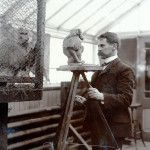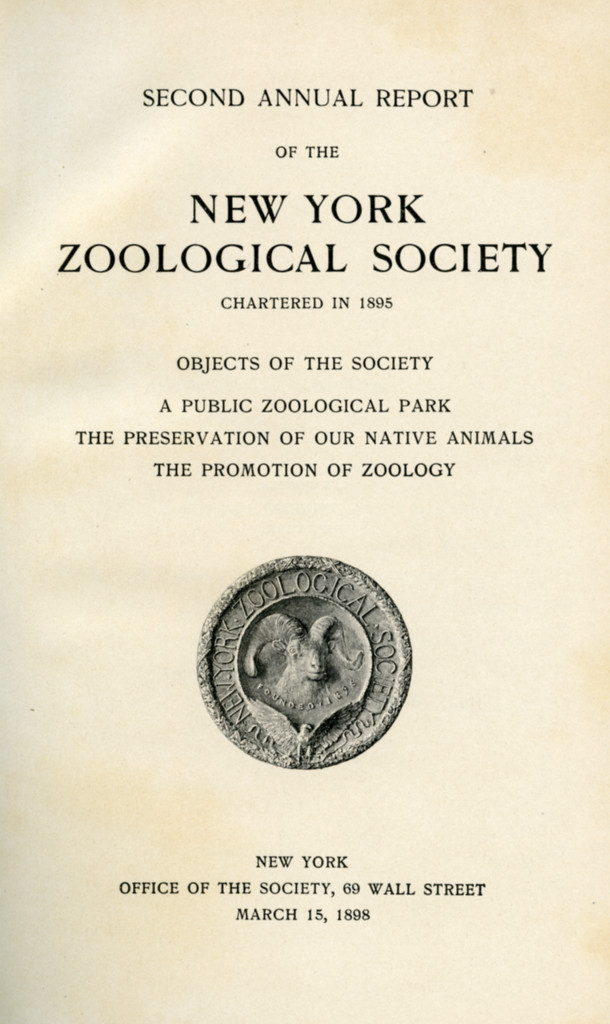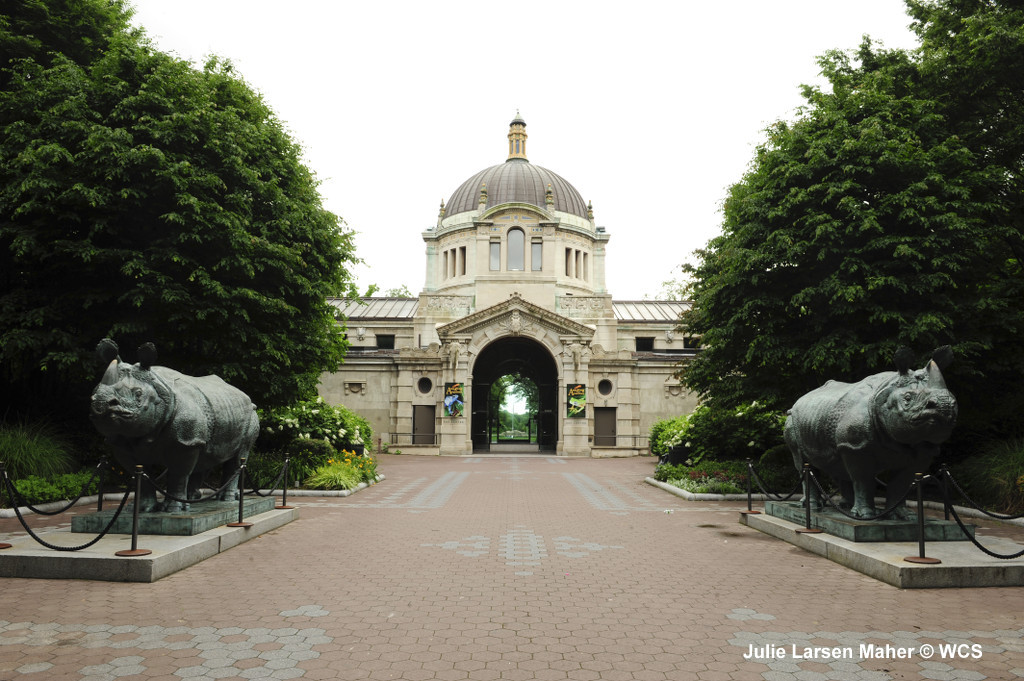 This is the second part of a two-part blog post on art in the early days of the Bronx Zoo. See here for part 1.
This is the second part of a two-part blog post on art in the early days of the Bronx Zoo. See here for part 1.
Beyond the Bronx Zoo’s Lion House studio, New York Zoological Society officials attempted to oblige artists working at the Zoo. Director William T. Hornaday arranged a special reduced rate for artists at the nearby Parkway Hotel. “The place seems respectable,” he assured visiting artists, “although of course there is a bar-room attachment”—a feature that possibly bothered the teetotaling Hornaday more than his artist guests. Hornaday also sent out a general order to all employees that “artists, sculptors, zoologists and students generally” were to be given special attention and “whenever possible, seats should be offered.”
Some artists also devised ways to avoid the crowds of visitors. The artist Paul Bransom, for instance, recalled retreating to Zoo buildings that “were noted not only for their beautiful inhabitants but for their unique odors.” Not only would most visitors rush through such buildings, but Bransom also would be given plenty of space on his subway ride home!
Further still, in addition to encouraging artists working at the Zoo, NYZS also sought to support wildlife art by hiring sculptors to decorate the Zoo’s original buildings, and visitors today can see the work of Eli Harvey, Charles R. Knight, and A. P. Proctor adorning such landmark-status buildings as the Monkey House, the Lion House, the Bird House (now an administration building), and the Elephant House (now Zoo Center). Over time, the Zoo’s outdoor sculpture collection expanded to include Anna Hyatt Huntington’s Reaching Jaguars (see our earlier Wild Things post on Huntington) and casts of Katharine Lane Weems’s Indian rhinoceroses, Bessie and Victoria.

NYZS art gallery, located in the Bronx Zoo’s Administration Building, circa 1920. WCS Photo Collection © WCS
The Society also collected wildlife paintings and displayed this collection and visiting works in the Zoo’s administration building and later in its Heads and Horns Gallery. Within the Society’s collection were works by Rosa Bonheur, Louis Agassiz Fuertes, Robert Bruce Horsfall, Knight, Carl Rungius, and other important wildlife artists.
Maybe you’re asking, why did the Zoo go to such lengths—including devoting significant funds—to oblige and to encourage the work of animal artists? The answer actually lies in the founding mandates of the New York Zoological Society:
First. — The establishment of a free zoological park containing collections of North American and exotic animals, for the benefit and enjoyment of the general public, the zoologist, the sportsman and every lover of nature.
Second. — The systematic encouragement of interest in animal life, or zoology, amongst all classes of the people, and the promotion of zoological science in general.
Third.— Co-operation with other organizations in the preservation of the native animals of North America, and encouragement of the growing sentiment against their wanton destruction.
For the Society’s founders, who promoted the scientific study of animals, wildlife painting and sculpture served as important tools to zoologists at a time when photographic technology lacked the ability to capture significant details—color foremost among them. Yet beyond a scientific audience, the Society saw wildlife art as a vital means not only of educating the public but also of stimulating interest in animals. As an 1897 Zoological Society Bulletin saw it, “the more the artistic reproduction of wild animals in painting and sculpture is increased, the more interest will the public take in our fauna, and the more will knowledge of it be increased.”

Title page from the Second Annual Report of the NYZS, featuring the Society’s seal, designed by Charles R. Knight. WCS Archives
This increased knowledge, the Society believed (and continues to believe today), would in turn help its third mandate, the preservation of wildlife. But NYZS also saw animal art as another means of “preserving” wildlife: fearing a losing battle against the fates that nearly caused the extinction of such animals as the American bison at the end of the nineteenth century, the Society viewed wildlife art as a tool to document the animals they worried would soon disappear. Advocating the Society’s role in supporting wildlife art, its first annual report lamented that “although our magnificent series of large game animals is rapidly passing away, the walls of nearly if not quite all the great art galleries in America are absolutely destitute of representations of them, much less of such representations as their size, beauty and importance richly deserve!” A catalogue of the Society’s painting collection published more than thirty years later echoed the importance of preserving through art “some of our fast disappearing creatures.”

Katharine Lane Weems’s rhino statues flank the Bronx Zoo’s Zoo Center. Photo: Julie Larsen Maher © WCS
Thankfully, the situation for some creatures has become less dire since the Society first turned to art as a means of preservation. This in part has come through organized conservation efforts, such as the Society’s involvement in repopulating the American bison in the West during the early twentieth century. Today, the Wildlife Conservation Society continues to strive to protect wildlife and wild places—to make sure, in other words, that the wildlife art created at the Zoo or collected by the Society does not become a memorial to lost species but rather serves as a celebration of living, thriving animals.
A version of this post also appears on the website for the exhibition Goddess, Heroine, Beast: Anna Hyatt Huntington’s New York Sculpture, 1902-1936, shown at Columbia University’s Miriam and Ira D. Wallach Art Gallery in Spring 2014.


his is great history. thanks
Thanks so much for such a beautifully written and informative article!